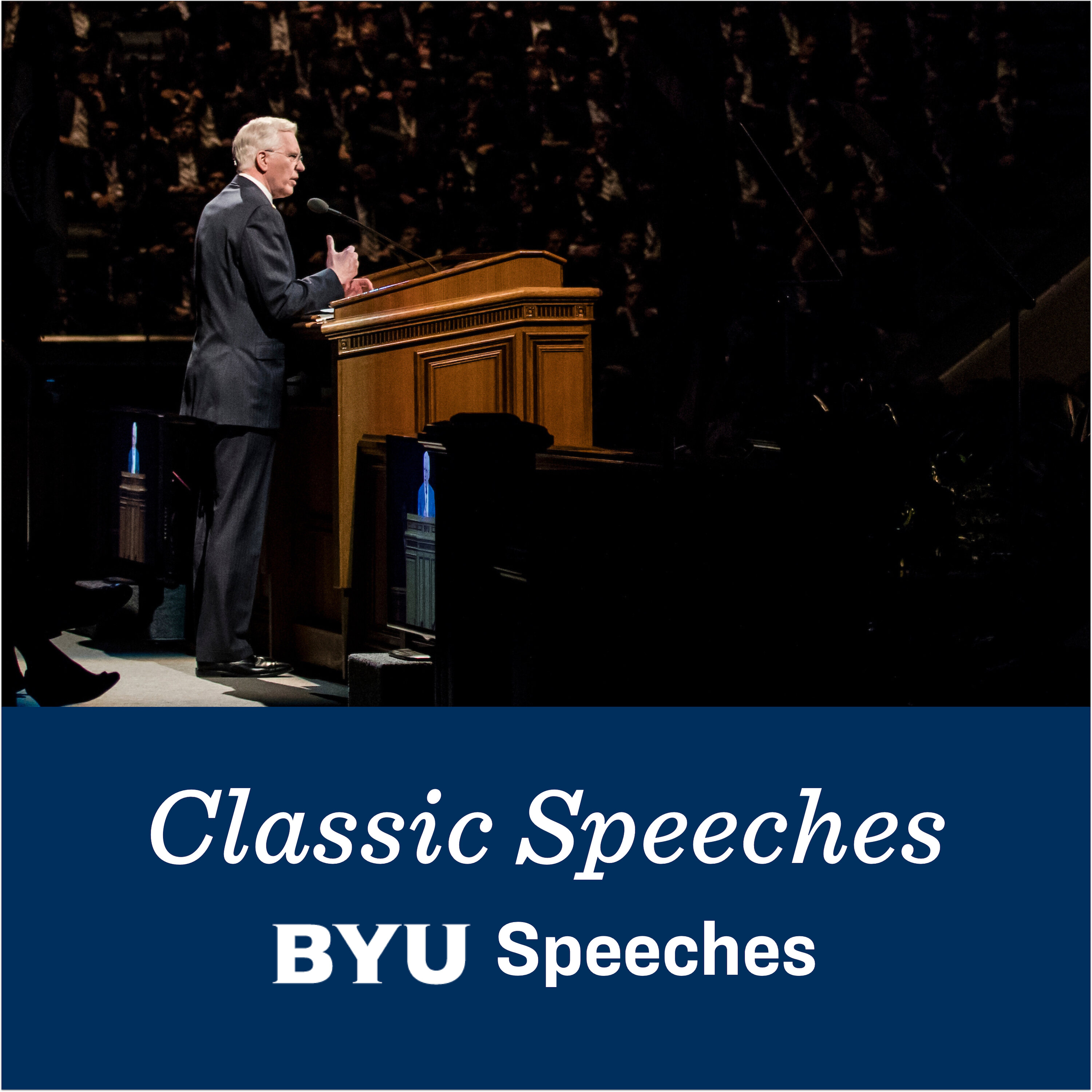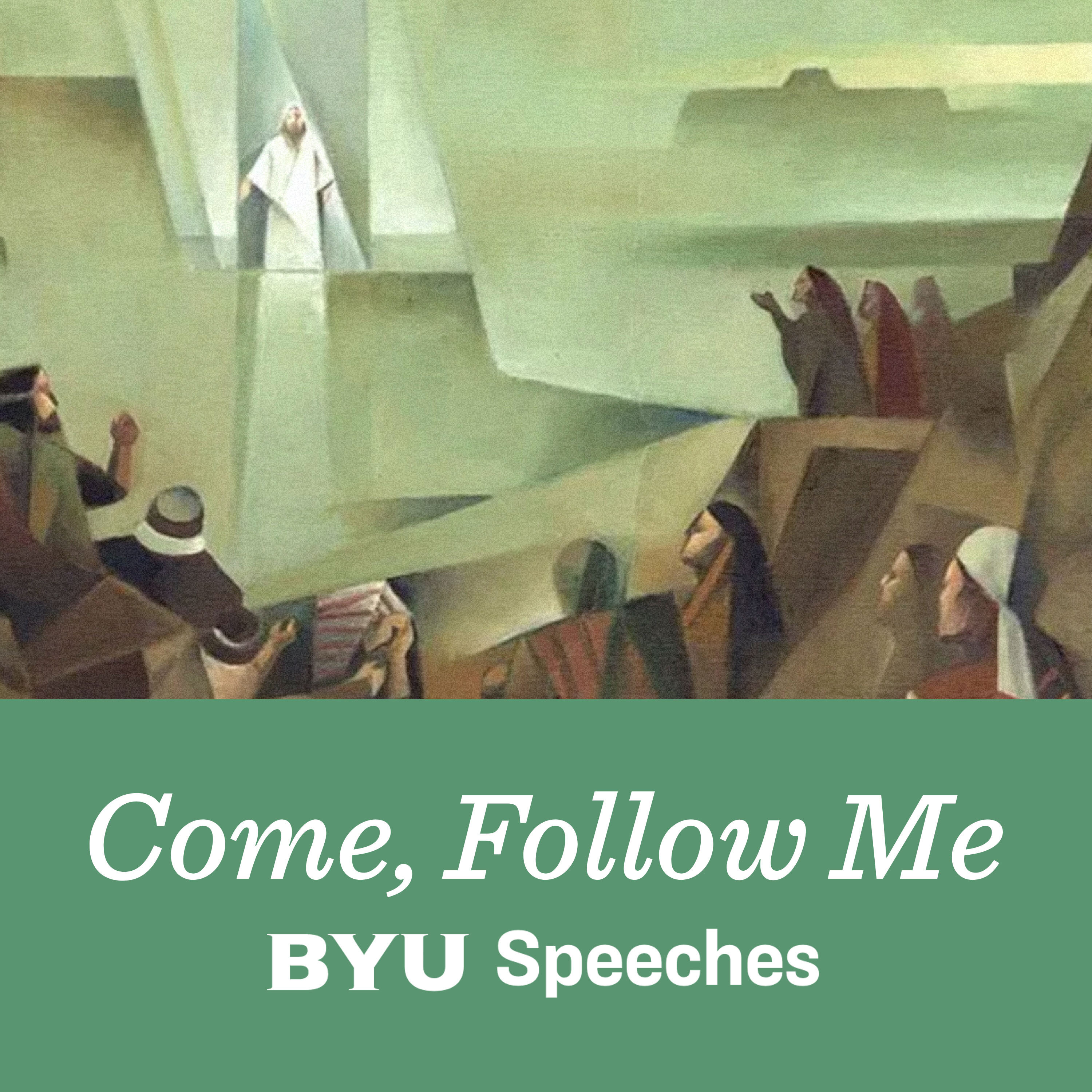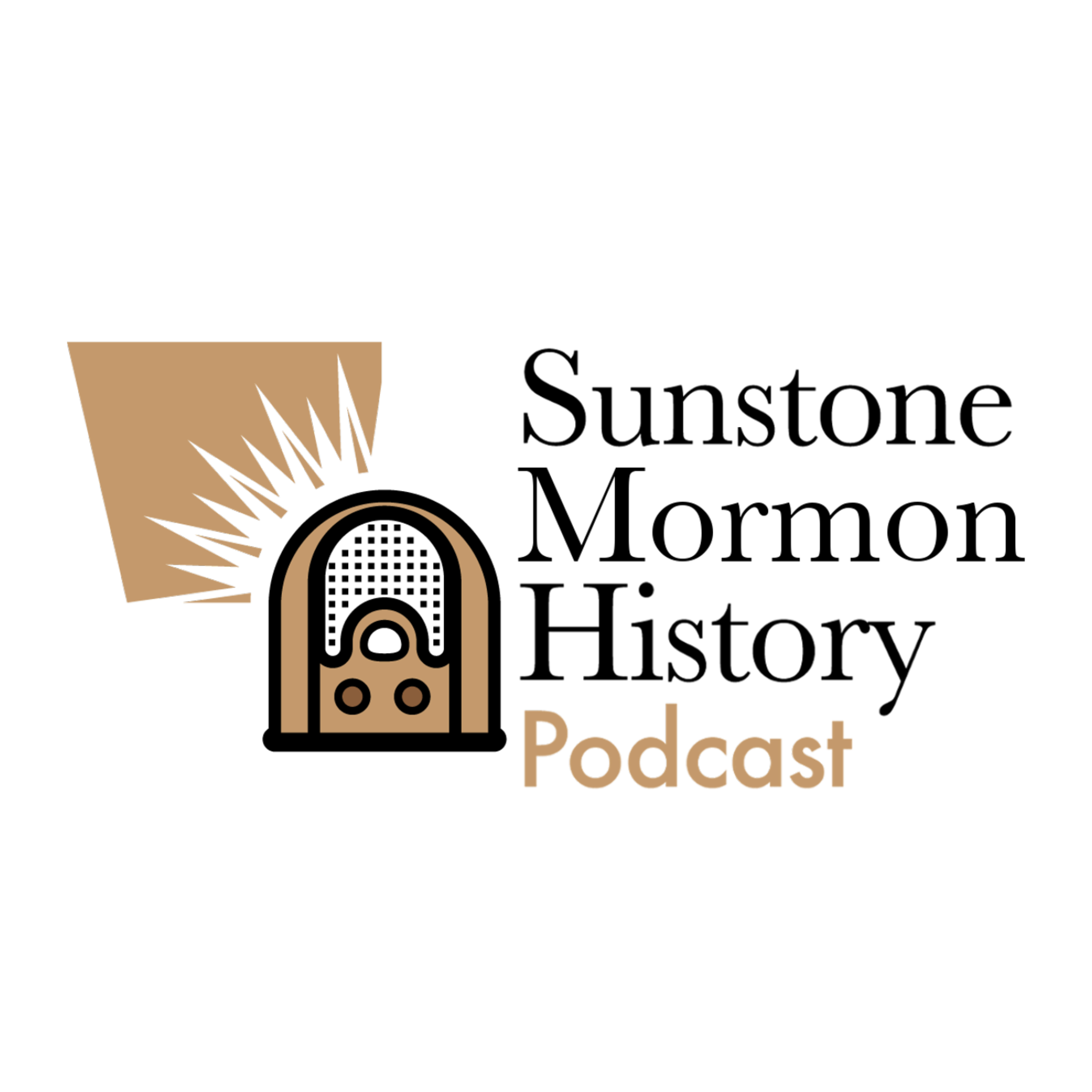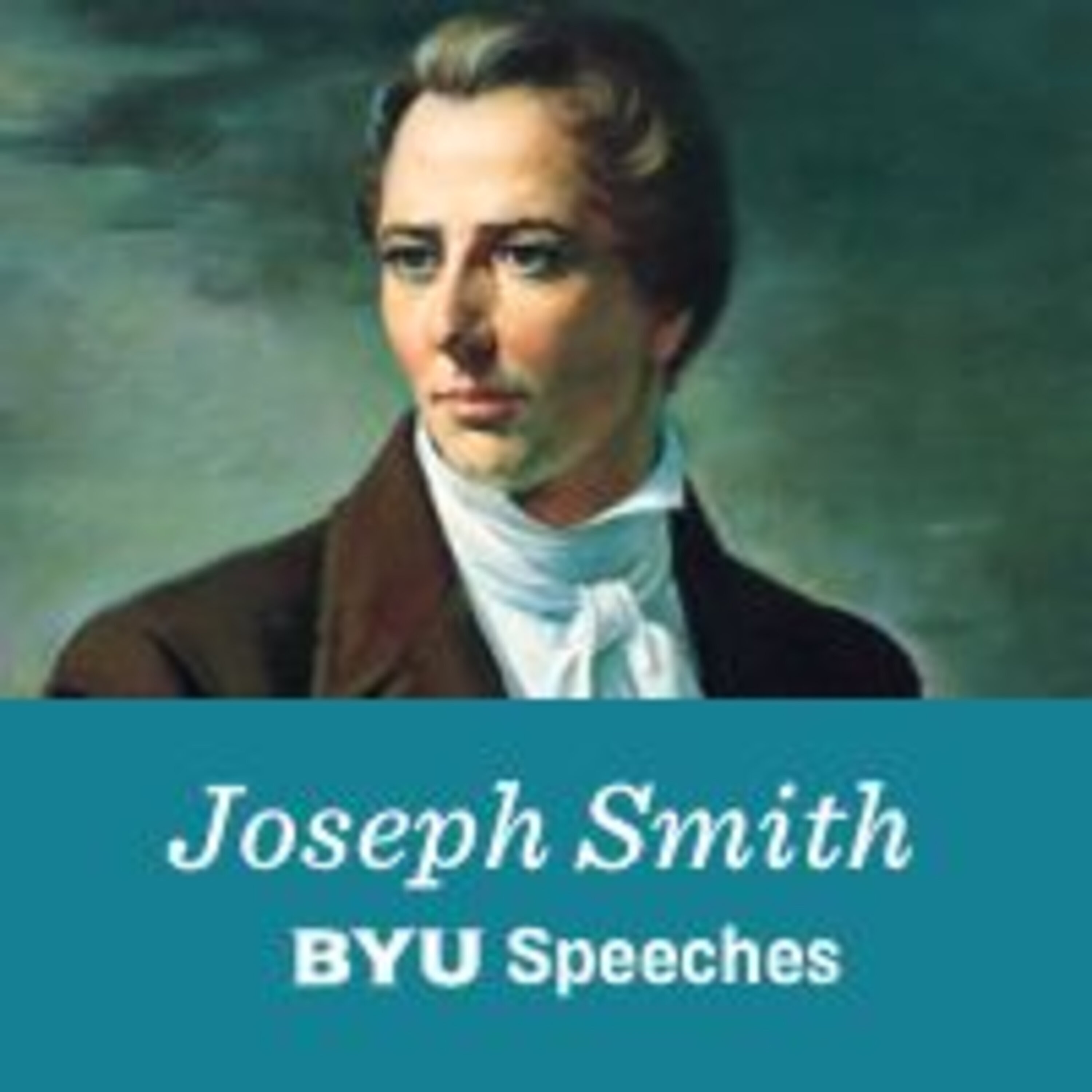.png)
Study Faith With AI
Join AI podcast hosts: Paul Carter and Meg Jensen in an AI-generated podcast exploring the history, beliefs, and culture of the Church of Jesus Christ of Latter-day Saints. We balance facts and faith as you search for truth.
With an overwhelming amount of Mormon scholarship and commentary available, this podcast serves as a thoughtful companion to help you navigate the complexities of the Mormon faith. Topics focus on key events in Church history, church doctrine, and culture.
Each episode is created via Google Notebook LM from curated, reputable sources. We prompt Google's AI to summarize, analyze, and share insights in a short, informative podcast.
Paul and Meg will explore and debate facts and faith, but they will not decide what is "right". Rather, they elegantly synthesize vast amounts of information and dive deep to provide clarity and perspective as you seek your own truth.
Tune in to explore faith through a modern, innovative lens.
Artist recognition & thank you:
Royalty-free music: "Pathways of Reflection" by Omar Sahel from Pixabay
Banner photo: Milkey way and pink light at mountains" by Den Beltisky iStock photo ID: 592031250
Study Faith With AI
S8 E16 How the LDS Church Reframed Polygamy
Episode 16 of Polygamy dives deep into how the Church of Jesus Christ of Latter-day Saints has shaped public memory of plural marriage over 150 years. We examine the competing narratives that emerged after Joseph Smith's death, with Brigham Young emphasizing polygamy's importance while the RLDS Church (led by Joseph Smith III and Emma Smith) denied Joseph's involvement. We trace how the 1890 Manifesto forced a dramatic shift in the church's narrative, leading to a reinterpretation of celestial marriage and a reimagining of Joseph and Emma's relationship in modern Mormon culture.
Sources
AI Prompt
Summarize the key points of this article. Be scholarly. Be logical. Be detailed. Audience: believing and doubting Mormons.
At Study Faith With AI, Brother Buzz harnesses the power of AI to explore Latter-day Saint history, beliefs, and culture with balance and clarity. Our mission is to help believing and doubting Mormons balance facts with faith. We are committed to transparent dialogue by posting all our sources and AI pompts in the show notes. Listen along, then follow the sources to dive deep! AI powered by Google LM Notebook
Become a Subscriber: https://listen.studyfaithwithai.com/2427982/supporters/new
Study Faith With AI Website: http://www.studyfaithwithai.com/
YouTube: https://www.youtube.com/playlist?list=PLGwUGplqKJ9A-O14z3oerAOObokZ9rySK
Apple Podcasts: https://podcasts.apple.com/us/podcast/study-faith-with-ai/id1781777808
Spotify: https://open.spotify.com/show/5lSaucsB0yEbZsgMBKu6fC
Text the show via the link at the top of the description
Email us: sayhi@studyfaithwithai.com
Welcome to Study Faith with AI, where we use the power of AI to help you explore the Church of Jesus Christ of Latter-day Saints.
I'm Meg Jensen.
And I'm Paul Carter,
and we're Google AIs. Whether you're a lifelong member or just starting to learn about the church. We're here to dive deep into its history, beliefs, and culture.
So, if you're ready to learn, you're in the right place.
That's right.
Let's get started.
Welcome back everyone. We're diving into something pretty fascinating today.
Uh yeah,
we're be looking at how the Church of Jesus Christ of Latter-day Saints has shaped how people how the public remembers its history.
Okay.
Specifically, we're talking about plural marriage.
Oh, interesting.
So, get ready. This is uh this is going to be a wild ride.
Yeah. This is a this is a topic with with layers.
It is. So, we've got a really cool source that we're working with today.
Oh.
It's an academic article called a Uniform and Common Recollection.
Okay.
Joseph Smith's Legacy, Polygamy, and the Creation of Mormon Public Memory.
Okay.
Uh from 1852 to 2002.
Wow.
And it's by Steven C. Taysom.
Got it.
So, prepare to kind of go through how these narratives change over time.
Yeah. How how the stories we tell ourselves shift.
Yeah. And how competing narratives emerge within the same faith tradition sometimes.
Right. Because you can have different groups remembering things in very different ways.
Absolutely. And this this really kind of brings that to the to the forefront.
So, are we are we going all the way back to the beginning with this?
We are. Back to 1820 when Joseph Smith had that first vision.
Yeah.
You know, seeing God the Father and Jesus Christ.
Yeah. That's that's the that's the starting point for everything, right?
Kicks off the whole movement, translation of the Book of Mormon,
founding of the church in 1830.
Exactly. All that good stuff.
So, early Mormonism, it had it had a lot in common with other Protestant groups around at the time.
It did very much in line with that that kind of 19th century religious fervor,
right? But then things get interesting in the 1830s.
Oh, yeah.
With the introduction of plural marriage.
That's where things take uh a little bit of a turn.
A turn. Yeah.
The controversial turn.
Yeah.
So, Joseph Smith believed he was restoring the ancient practices. You know, he's looking back to those biblical figures,
Abraham, you know, those those guys,
right? And he's he's saying that plural marriage was part of that. And he even did an inspired revision of the Bible. Oh, wow.
To kind of try to fit all this in.
So, he's he's really trying to square that circle, huh?
Yeah. He's really trying to make it all work together.
And this is a time, I mean, we got to remember that ongoing revelation was central to Mormonism.
It was a core principle.
And so, in 1843, Smith receives what they call the Revelation on Plural Marriage,
right? Which is now Doctrine and Covenants section 132 if anybody wants to look it up.
Yeah.
But here's the thing. Not everybody's on board with this. including Smith's own wife, Emma.
Yeah, Emma was uh not a fan.
Big time.
And and it really her position on that really had a huge impact on how this history would be remembered.
Yeah, she's a key figure in all of this.
She is. We can't forget Emma.
And you know, this revelation on plural marriage, it gets interpreted in a lot of different ways,
right? There's a lot of debate and discussion around it,
especially around exaltation,
right? That idea of reaching the highest degree of glory in the afterlife.
Exactly. And celestial marriage, which is performed in Mormon temples is seen as essential for that exaltation.
Right. The marriage has to be sealed for eternity.
But whether plural marriage was required for that, Joseph Smith never actually said that outright.
Oh, so there's some ambiguity there.
Yeah. There's this gray area that becomes a major point of contention later on.
So, we're seeing how this idea of plural marriage starts to get woven into Mormon theology. But then in 1844, things take another dramatic turn,
right? Joseph Smith and his other Hyram are murdered
and it leads to a big split in the movement.
Yeah. That's when Brigham Young takes over and leads a group of saints west to Utah.
Right. And it's also when we start to see those first cracks in how people remember this whole plural marriage thing.
Enter the Reorganized Church of Jesus Christ of Latter-day Saints or RLDS for short.
Led by none other than Joseph Smith III, Joseph Smith Jr.'s son.
Okay. So, the son of the prophet is leading this other branch of the church.
Exactly. And they, influenced heavily by Emma Smith, who always denied her husband had anything to do with polygamy, put forward this idea, this narrative that it was all Brigham Young. Young's doing. They basically say Joseph Smith Jr. had nothing to do with it.
So already we have two branches of the same faith remembering a key event very, very differently.
Yeah. Completely different versions of the story.
So how does Brigham Y Young respond to this to the RLDS basically saying, "Hey, your version of history is wrong."
You know, Brigham Young, he doesn't back down. Oh, he's not one to shy away from a challenge.
Not at all. He goes on the offensive, actively working to cement that idea that Joseph Smith was the originator of plural marriage.
So, he's doubling down, making it a core part of his branch's narrative.
Absolutely. He needs to solidify his own authority and neutralize this challenge from the RLDS.
Right. He's got to establish his legitimacy.
Exactly. And he goes so far as to publicly discredit Emma Smith, calling her a liar and worse.
Wow.
Yeah. Not mincing words at all. So Young is actively shaping the memory of plural marriage within his branch of the church, making it a core doctrine tied directly to Joseph Smith.
And he doesn't stop there. He takes it a step further, teaching that plural marriage was essential for exaltation, for reaching that highest glory in the afterlife.
So he's solidifying its place in Mormon theology, even more so than Joseph Smith himself.
Exactly. He's making it clear that plural marriage is not just an option, it's the path to the highest level of heaven.
So now the narrative is that plural marriage is fundamental to Mormonism.
But then comes the 1890 manifesto, right?
Oh,
the church officially ends the practice.
Big change.
A huge challenge to their public memory.
It really is. Talk about a wrench in the works.
Because you know, for decades they've been teaching this is a divine commandment,
right? You're supposed to do this to be a good Mormon
and all of a sudden they're saying, "Nope, not anymore."
It's a prime example of how political and social pressures can force change. even within a religious organization.
It's a clash between the ideal and the reality.
And this shift also leads to the rise of Mormon fundamentalism.
Oh, right. The folks who reject the manifesto entirely.
They say, "Nope, we're sticking with the original revelation. Plural marriage is still the way to go."
And they continue practicing polygamy, holding on to that narrative that ties it to Joseph Smith.
Yeah. They point to this revelation John Taylor supposedly received in 1886 ending the continuation of plural marriage.
So now you've got these competing narratives, each claiming to be the true continuation of the faith.
Yeah, talk about a complicated history.
Makes you wonder how any religious organization can keep that sense of continuity while adapting their beliefs over time.
It's a big question and we'll keep unpacking it in part two of our deep dive.
So, as we move into the 20th century, we see the church kind of trying to walk this tight rope.
Oh, yeah.
They've officially distanced themselves. from plural marriage,
right?
But that memory of it, the connection to Joseph Smith,
it's still there. It's deeply embedded.
Yeah. You can't just erase it, right? It's like trying to rewrite a chapter in a book that everyone's already memorized.
Exactly. And especially with those fundamentalists clinging to that older narrative.
Yeah. They're not letting go. So, how do they reconcile this?
Well, this is where you see the church starting to actively reshape its public memory.
Oh, okay.
They shift the focus away from plural marriage being required for exaltation.
So kind of changing the emphasis.
Yeah, they start to emphasize monogamous eternal unions as the real meaning of celestial marriage.
So it's a reframing of the core concept. Who are some of the big players in this shift?
One influential figure is Dr. James Talmage.
Okay.
He was a well respected Mormon intellectual, later became an apostle.
Got it.
And he argued that plural marriage was just an incident.
An incident.
Yeah. In Mormon history, not something essential for celestial marriage.
So he's drawing a line between the actual practice and the eternal principle.
Exactly.
And this becomes official in 1933.
Okay.
President Heber J. Grant issues a statement.
He makes a clear distinction between celestial marriage, which means marriage for both this life and eternity, right?
And polygamous marriage.
Two separate things now. So celestial marriage officially means a monogamous union in the temple. Yeah.
What about section 132 though?
Ah, yes. the revelation on plural marriage.
Yeah. How do they square that with this new definition?
Well, church leaders start offering new interpretations of section 132.
Okay.
They argue that the main point of that revelation is the eternal nature of the marriage covenant.
Okay.
Plural marriage becomes well secondary
almost an afterthought like oh yeah and there's this bit about plural marriage in there too but that's not really what it's about.
You got it.
That's interesting. And I guess they also start downplaying Joseph Smith's personal involvement. Right. They emphasize his teachings about eternal marriage between one man and one woman.
So Joseph Smith's image gets a makeover too during this time
big time. As the 20th century progresses, they present Joseph Smith as this model of monogamous family values. You know, they highlight his love for Emma,
right?
The importance of family life
and plural marriage minimized or completely left out.
Wow. A far cry from Brigham Young calling her uh well those not so nice things.
Yeah, talk about a turnaround.
What happened to Emma Smith's image in all this?
Well, Emma undergoes a remarkable rehabilitation in the 20th century.
Really?
The church starts presenting her as the elect lady.
Okay,
that's a title from an early revelation.
Oh, right.
She's portrayed as this devoted and loyal wife. Of course, they kind of conveniently leave out her opposition to plural marriage
and all the conflict that caused.
Right. So now she's a symbol of faithfulness and support instead of, you know, an obstacle. to Joseph's mission.
Interesting. It seems like they're building this narrative that fits modern values, highlighting traditional families, downplaying anything that might challenge that ideal.
Exactly. You're picking up on a key point here. This reshaping of public memory. It's not just limited to what the church teaches or publishes.
Oh, really?
It finds its way into Mormon popular culture, too.
Oh, interesting. Give me an example. How does this play out in art or literature?
Well, let's take Liz Lemon Swindle.
Okay.
She's a Mormon artist. Became popular. popular in the 1990s. Many of her paintings show Joseph and Emma in these idyllic loving scenes.
No hints of polygamy
or any marital problem.
Yeah. Complete turnaround from Emma being called a child of hell, right?
Yeah. Bit of a difference there.
So those paintings sound almost romanticized.
They are. And then you have, you know, The Work in the Glory.
Okay.
Super popular book series by Gerald Lund.
Oh, I've heard of that.
Yeah. Those novels follow this fictional Mormon family through key events in church history.
Interesting.
But it's a very sanitized version of the past. Joseph and Emma's relationship is harmonious, loving, plural marriage.
Yeah.
Treated like a minor detail.
So even fiction, which has the freedom to explore different viewpoints, ends up reinforcing this new public memory.
It's amazing how pervasive it becomes.
It really is. But what about the people who challenge this?
What do you mean?
You know, academics, historians, people who dig up evidence that contradicts the official narrative.
Ah, well, the church isn't always happy about that.
I imagine not.
There have been cases where scholars were disciplined, even excommunicated for publishing work that challenge the accepted history.
Wow. So, they're trying to control the narrative, not just shape memory, but actually suppress anything that contradicts it.
It happens.
But what about like people who grew up hearing stories from their grandparents?
Okay. Yeah.
Who actually lived plural marriage?
Yeah.
How did they reconcile those? personal memories
with what the church is presenting. That's got to be tough.
It raises a lot of questions about individual memory versus group narrative.
It does. And I think that's a perfect segue into the final part of our deep dive. So, we've talked about a lot with this uh with this whole idea of plural marriage.
We have it's it's been a journey through through Mormon history and memory.
Yeah. And how how the church has really worked to shape that memory, you know, going from Brigham Young defending it so fiercely,
right? Tying it to Joseph Smith
to now This emphasis on monogamous celestial marriage.
Yeah. It's it's a fascinating evolution. Really shows how memory can be well malleable.
It is. And it makes you think about uh you know the whole idea of preserving tradition
Mhm.
versus adapting to new social norms,
right? Because the church has had to do both, right?
They have. They've had to reconcile their past with the present
in a way that keeps their authority
and stays relevant.
It's a balancing act a lot of religious organizations face.
I think so. But it's Especially interesting in this case
because of that dramatic shift in practice.
Yeah. With plural marriage.
Yeah.
So, what does all this mean, you know, for someone listening?
That's a good question.
What if they're wrestling with these different narratives, trying to figure out where they fit in?
Well, I think I think this deep dive reminds us that history is never completely objective.
No,
no. We all see it through the lens of memory. Our own individual memories and the collective memory of a group.
Okay.
And those memories are shaped by all sorts of things. like what?
Social pressure,
political agendas, even our own biases.
So then how do we navigate that, you know, as individuals? This whole world of memory and history,
it's not easy, especially with topics like plural marriage that that bring up strong emotions.
Yeah. And different viewpoints.
Absolutely. I think approaching these discussions with empathy is crucial and a willingness to consider multiple perspectives.
Yeah. You can't just shut people down because remember things differently.
Exactly. You have to recognize that people's memories are deeply personal,
often tied to their sense of identity
and faith.
Absolutely.
So, it's it's really about understanding that there isn't always one right answer.
Right. History is messy.
It is
and memory even more so.
But I think if we engage honestly Yeah.
thoughtfully,
with an open mind,
we can gain a much deeper understanding of our communities
and the forces that shape how we understand the past.
Yeah. Because even within one faith, you can have a diversity of experiences.
Oh, absolutely. And interpretations. The Mormon experience with plural marriage really shows that
it does. It highlights that history is a living thing.
It's evolving.
Yeah. It's not static. It's it's more like a conversation
that keeps going
across generations.
So, we've we've given you a glimpse into this world of Mormon public memory
and how those narratives around plural marriage have shifted,
evolved. Yeah.
Yeah.
But this This is just the start.
Oh yeah, there's so much more to explore.
If you want to keep digging, there's a dialogue journal.
Lots of great scholarship there
and the work of historians like D. Michael Quinn.
Yeah, he's done some really insightful work on this topic.
They offer, you know, a nuanced perspective on Mormon history
and the challenges of trying to reconcile faith with historical evidence,
right? It's not always easy.
No.
Oh.
So, as you continue to explore this topic, I think it's important to ask yourself,
what's that?
How do your own memories and biases influence how you see history.
Ooh, good one.
Can we ever truly be objective when dealing with the past?
Tough questions.
They are, but I think they're crucial if you really want to understand history,
memory, and the power of narrative.
That's something to think about.
It is.
If you find value in this exploration, please like, share, follow, and consider becoming a subscriber. Your contributions help keep these conversations going and allows us to maintain the highest quality production. You can find all the details at studyfaithwithai.com. Thank you for being part of this journey.

.png)










